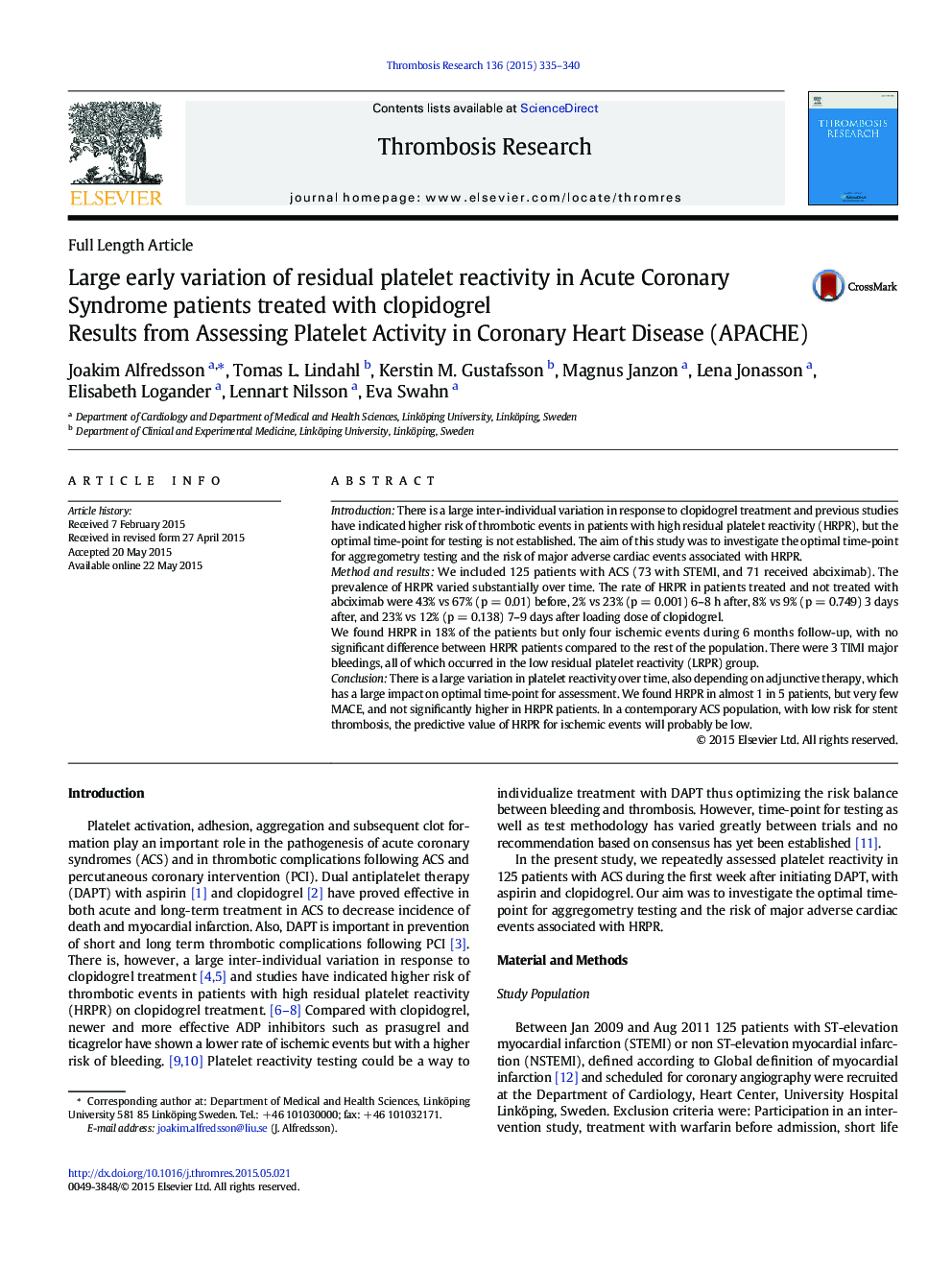| Article ID | Journal | Published Year | Pages | File Type |
|---|---|---|---|---|
| 6001305 | Thrombosis Research | 2015 | 6 Pages |
â¢We have measured aggregation at several time-points after an acute coronary event.â¢The proportion of patients with high residual platelet reactivity (HRPR) changes substantially over the first 7-9 days.â¢Although we have a similar rate of HRPR as earlier studies we observed very few clinical events.â¢The predictive value of HRPR is highly dependent of the studied population.
IntroductionThere is a large inter-individual variation in response to clopidogrel treatment and previous studies have indicated higher risk of thrombotic events in patients with high residual platelet reactivity (HRPR), but the optimal time-point for testing is not established. The aim of this study was to investigate the optimal time-point for aggregometry testing and the risk of major adverse cardiac events associated with HRPR.Method and resultsWe included 125 patients with ACS (73 with STEMI, and 71 received abciximab). The prevalence of HRPR varied substantially over time. The rate of HRPR in patients treated and not treated with abciximab were 43% vs 67% (p = 0.01) before, 2% vs 23% (p = 0.001) 6-8 h after, 8% vs 9% (p = 0.749) 3 days after, and 23% vs 12% (p = 0.138) 7-9 days after loading dose of clopidogrel.We found HRPR in 18% of the patients but only four ischemic events during 6 months follow-up, with no significant difference between HRPR patients compared to the rest of the population. There were 3 TIMI major bleedings, all of which occurred in the low residual platelet reactivity (LRPR) group.ConclusionThere is a large variation in platelet reactivity over time, also depending on adjunctive therapy, which has a large impact on optimal time-point for assessment. We found HRPR in almost 1 in 5 patients, but very few MACE, and not significantly higher in HRPR patients. In a contemporary ACS population, with low risk for stent thrombosis, the predictive value of HRPR for ischemic events will probably be low.
